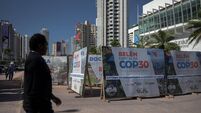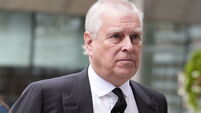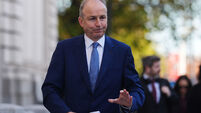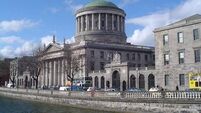Predictable backlash against cutting car use shows politicians haven't read the detail
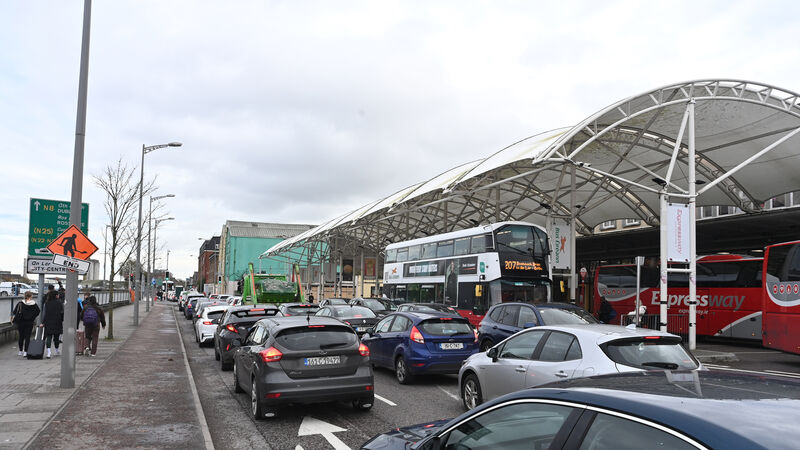
Traffic at Parnell Place in Cork city last November. The National Transport Modelling Tool would include car-free areas in the major cities, a €10 congestion charge in the five major cities and a 400% increase in parking charges in these cities. Picture: Larry Cummins
Plans to introduce congestion charges and higher car parking fees that form part of a modelling exercise on what it will take to reduce car usage and meet climate targets have been met with a predictable backlash of criticism from Government TDs.
Statements from TDs and senators suggest that many have not read the detail of the report that specifically acknowledges and makes provision for the higher dependency of people living in rural areas on car ownership. There is no attempt to provide realistic alternatives to reach mandatory climate targets within the short time frame of the next seven years.
Neither is it clear that the introduction of a trial of free transport as suggested by AA Ireland would be enough to get drivers to part with their cars. Transport Minister Eamon Ryan suggests that an additional €540m would be required "at a minimum" annually and that free fares "would not substantially boost the sustainability of the transport system".
In Ireland, the transport sector accounts for about 20% of all Ireland’s carbon emissions output. Analysis using the National Transport Modelling Tool shows that 95% of emissions in that sector are from roads: a combination of passenger cars, freight and public transport.
Modelling projections indicate that increased transport activity, in a ‘business as usual’ framework would lead to an increase in carbon emissions of about 8% above 2018 levels by 2025 and 15% above 2018 levels by 2030.
Under the Climate Action commitments by 2030, total transport-related carbon emissions must decrease by 50% compared to 2018 levels. The plan involves identifying a pathway to achieve the target carbon emission reductions by 2030, taking cognisance of the need for a Just Transition.
The pathway includes measures to improve the fleet – improving internal combustion engine (ICE) vehicles but also shifting to electric vehicles — use of ‘biofuel’ and behavioural change measures to shift from car use to active travel and public transport.

The behavioural change measures suggested in the modelling report include the development of car-free urban centres, congestion charging, parking constraints, improving public transport service interchange, further reductions in public transport fees, incentives to work from home, increases in the cost of fossil fuels, increased cycling and elimination of ‘fuel tourism’.
The model assumes that the bus and rail fleet will be fully electrified. Critically, it recognises the higher dependence of people in rural areas on cars and suggests that promoting a shift to EVs in particular areas would be a more effective policy than a blanket incentive on the use of EVs.
In terms of cities, the reality would include car-free areas in the major cities, a €10 congestion charge in the five major cities and a 400% increase in parking charges in these cities. At the same time, public transport interchanges would be improved – reducing wait times for public transport by 66% and increased capacity to reduce crowding as well as a 50% reduction in fares from the 2018 baseline.
A 65% increase in the price of pump petrol and diesel from 2018 prices would further incentivise the move away from ICE vehicles to EVs. Car ownership targets are set at a reduction of 10 – 14% in cities to a mere 1% reduction in rural areas – further acknowledging the more limited alternatives to the use of EVs in rural areas.
This modelling report is timely as the International Energy Agency (IEA) published figures for the continued global rise in sales of SUVs that pushed their emissions to almost a billion tonnes of carbon dioxide in 2022. Purchases of SUVs continue to soar, rising from 20% of new cars in 2012 to 46% of all cars last year, the IEA reported.
About one in six SUVs sold in 2022 were electric. "Electric vehicles are growing in popularity but not quickly enough to offset the increasing oil consumption and emissions of the wider fleet," the IEA experts said.
Meanwhile, the most bike-friendly cities are advocating a leap of faith to move out of cars and into active travel. Nine of the 10 most bike-friendly cities in the world are in Europe according to the Global Bicycle Cities Index. When we consider the historic charm of many of these European cities, without the downsides of congestion and polluted air – it is not surprising that these cities have moved permanently towards active travel.
Hannover is the tenth most bike-friendly city due to quality infrastructure and events promoting cycling including ‘no car days.’ Bremen is the first German city to be home to an entire ‘bicycle zone’ in the Neustadt district – a neighbourhood with a speed limit of 30kph where bikes have priority.
Amsterdam is the fifth most bike-friendly city, its safety score may be what’s holding it back. Amsterdam is home to 100,000 cyclists – five times more than its closest rival, Copenhagen. Copenhagen is safer for cyclists but also safer for bikes thanks to a low theft rate and ‘no car days’.
Munster in Germany has a low rate of cycling fatalities, even though 39% of residents use bikes on a daily basis. The top ranked bike-friendly city is Utrecht in the Netherlands – boasting high scores for cycling infrastructure with more than half (51%) of its residents using a bike in everyday life.
The level of ambition in development of cycling infrastructure in Ireland remains a fraction of what is seen in our European counterparts. Bicycles have become the most popular mode of transport on the City of London roads overtaking cars for the first time in 2022, according to a report from the Environment Department of the City of London Corporation.
It said that in 2019 cars constituted 27% of all traffic on the financial district’s streets, more than any other mode of transport. In 2022, however, data from the same 30 traffic points used in 2019 showed that it was bicycles that topped the list with 27% modal share during the daytime and making up a whopping 40% of traffic during morning and evening peaks.
Head of the Department of Civil, Structural and Environmental Engineering, Trinity College Dublin, Professor Brian Caulfield clarifies what a 50% reduction in transport emissions would include: 25% of all white collar workers working from home, 100% increase in cycling, a €10 congestion charge in five cities, a 14% reduction in car use ownership in Dublin and 10% in other cities.
Further options put forward in the regional modelling system include: car parking charges to increase by 400%; public transport fares to decrease by 50%; speed limit reductions, 100% new car sales by 2029 to be electric, an increase in fuel prices, a 66% reduction in wait times at public transport stops and an increase in public transport capacity.
Taoiseach Leo Varadkar has ruled out any question of an imminent congestion charge for motorists entering Irish cities. Mr Varadkar said that while such measures have merit, major cities like Dublin, Cork and Limerick are not ready for such a change.
However, the logical conclusion from this comprehensive and pragmatic report is that, to achieve a reduction in emissions in the transport sector, as required by the Climate Action Plan, unpopular policy decisions are essential to get people living in cities out of cars.
- Dr Catherine Conlon is a Cork public health doctor and safefood’s former director of human health and nutrition
CLIMATE & SUSTAINABILITY HUB





